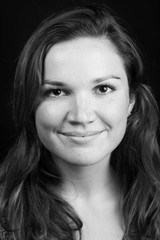Research
My research focuses on genome assembly, the process of reconstructing a genome from sequencing data. This is a challenging process, where algorithmic accuracy as well as efficiency are crucial. By developing new approaches to several relevant assembly problems we can make better use of sequencing data and extend our understanding of microbial genomics. Further details on my contributions to the topics described below can be found in my Publications.
Wastewater analysis
Wastewater analysis is a powerful tool for infectious disease surveillance. For example, it has an important role in detection and monitoring of viral infections, including COVID-19 and polio. However, identifying and quantifying viral lineages present in wastewater samples can be challenging dure to the complexity of the data, low concentrations of genetic material of interest and high fragmentation rates. To address these challenges, we develop algorithms for the design and analysis of targeted wastewater sequencing data. This includes AmpliDiff and VLQ, further described in Software. The field of wastewater analysis is rapidly developing and holds great potential for wide-scale genomic surveillance of pathogens.
Haplotype reconstruction
The copy-specific sequences of the genome are called haplotypes, and the number of haplotypes in a given organism is described by its ploidy. Ploidy can vary across species, some species being haploid (one copy per chromosome, e.g. bacteria), some being diploid (two copies per chromosome, e.g. many mammals, including humans), and others having higher ploidies (many plants have at least 4 copies per chromosome).
Generic de novo assembly approaches produce a consensus assembly, meaning that the different haplotypes that make up the genome are collapsed onto a single consensus sequence. In haplotype-aware genome assembly, the goal is rather to reconstruct the individual haplotypes in an organism or population. This is particularly challenging: beyond distinguishing true genomic variation from sequencing artifacts, the true variants need to be assigned to the different genome copies.
In my PhD thesis I discuss the topic of haplotype reconstruction and present new algorithms for de novo haplotype assembly (see also Software).
Viral quasispecies assembly
A highly relevant application of haplotype reconstruction appears in the analysis of viral infections. Since viruses (in particular RNA viruses) exhibit very high mutation rates, their genomes undergo rapid changes that allow them to adapt to their environment and escape drug treatment and immune response. As a result, the virus exists as a “quasispecies”: a cloud of closely-related mutant strains, each with its own characteristics in terms of virulence and resistance. Since knowledge of the infecting strains contributes to improved treatment design, I have developed a series of methods that enables highly accurate, full-length viral quasispecies assembly. See this video for an animated explanation of one of these algorithms.
Strain-aware metagenomics
Metagenomics studies the genetic material found in environmental samples, for example taken from the ocean or the human gut. These samples typically contain a large number of different species, as well as different strains from the same species; a metagenome captures all genomes in a given microbial community. The goal of strain-aware metagenome assembly is to reconstruct each of the individual genomes in a metagenome, thus preserving all within-species variation. Based on my experience with viral metagenomics (see viral quasispecies above) we are working on an accurate workflow for strain-aware metagenomics.
Bacterial evolutionary genomics
Bacterial genomes can be dramatically rearranged by mobile genetic elements, recombination, and horizontal gene transfer. Such rearrangements result in structural variation between genomes, including large repetitive sequences (repeats). Identifying these repeats and other structural variants is important, because these genomic changes can influence phenotypes such as virulence and susceptibility to antibiotics. I work on methods for accurately resolving structural variation, to further our understanding of bacterial evolution and antibiotic resistance.
